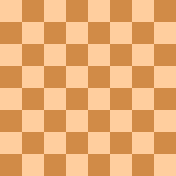
- Chess World Cup
- FIDE Grand Prix
- Olympiad
- World Championship
- List of strong tournaments
- List of world championships

- Checkmate patterns
- Chess openings
- Chess strategy
- Chess tactics
- Chess theory
- Endgames
- Pawn structure
- Problems/Compositions












|
|||||||||||||||||||||||||||||||||||||||||||||
| Moves | 1.e4 e5 2.Nf3 Nc6 3.Nc3 Nf6 4.Nxe5 | ||||||||||||||||||||||||||||||||||||||||||||
|---|---|---|---|---|---|---|---|---|---|---|---|---|---|---|---|---|---|---|---|---|---|---|---|---|---|---|---|---|---|---|---|---|---|---|---|---|---|---|---|---|---|---|---|---|---|
| ECO | C47 | ||||||||||||||||||||||||||||||||||||||||||||
| Parent | Four Knights Game | ||||||||||||||||||||||||||||||||||||||||||||
| Synonym(s) | Müller-Schulze Gambit Leipzig Gambit |
||||||||||||||||||||||||||||||||||||||||||||
The Halloween Gambit (also known as the Müller-Schulze Gambit or Leipzig Gambit) is an aggressive chess opening gambit in which White sacrifices a knight early-on for a single pawn. The opening is an offshoot of the normally staid Four Knights Game and is defined by the moves:
The theoretician Oskar Cordel reported in 1888 that Leipzig club players used the opening to dangerous effect, but he did not believe it was sound. Their name for it, Gambit Müller und Schulze, was not after any players by those names, but rather a jocular German equivalent of "Smith and Jones", or, "Tom, Dick, and Harry".
White's objective is to seize the center with pawns and drive back Black's knights. After 4... Nxe5, White usually plays 5. d4 (5.f4 does nothing for his development), after which Black can retreat the attacked knight to either g6 or c6.
| a | b | c | d | e | f | g | h | ||
| 8 |

                              |
8 | |||||||
| 7 | 7 | ||||||||
| 6 | 6 | ||||||||
| 5 | 5 | ||||||||
| 4 | 4 | ||||||||
| 3 | 3 | ||||||||
| 2 | 2 | ||||||||
| 1 | 1 | ||||||||
| a | b | c | d | e | f | g | h | ||
When Black retreats 5...Ng6, White chases the f6-knight with 6.e5. Then after 6...Ng8 7.Bc4, former world champion Max Euwe recommended 7...d5 8.Bxd5 c6, contending in volume 11 of his opening series that Black has a decisive advantage.
Instead of holding on to the extra piece with the usual 6...Ng8, a more logical continuation according to Eric Schiller is 6...Bb4, giving Black the better game after 7.exf6 Qxf6 with a lead in development and pressure in the center.
When Black retreats 5...Nc6, White chases the knight again with 6.d5. Then Black has 6...Ne5 (the Main line), or 6...Bb4 (Pinski's move).
| a | b | c | d | e | f | g | h | ||
| 8 |

                              |
8 | |||||||
| 7 | 7 | ||||||||
| 6 | 6 | ||||||||
| 5 | 5 | ||||||||
| 4 | 4 | ||||||||
| 3 | 3 | ||||||||
| 2 | 2 | ||||||||
| 1 | 1 | ||||||||
| a | b | c | d | e | f | g | h | ||
After 6...Ne5, White chases again with 7.f4. Then after 7...Ng6 the game usually continues 8.e5 Ng8 9.d6, completing the most commonly seen sequence in the Gambit (see diagram). In this position White is on the attack, and his attack will generally persevere (with tactics such as Nb5 after a pawn trade at d6).
| a | b | c | d | e | f | g | h | ||
| 8 |

                              |
8 | |||||||
| 7 | 7 | ||||||||
| 6 | 6 | ||||||||
| 5 | 5 | ||||||||
| 4 | 4 | ||||||||
| 3 | 3 | ||||||||
| 2 | 2 | ||||||||
| 1 | 1 | ||||||||
| a | b | c | d | e | f | g | h | ||
GM Larry Kaufman wrote in 2004 that the Müller-Schulze Gambit is refuted by 4...Nxe5 5.d4 Nc6 6.d5 Bb4! 7.dxc6 Nxe4 8.Qd4 Qe7, which he attributes to the Polish IM Jan Pinski. In 2003 Pinski analyzed 9.Qxg7 Nxc3 10.Be3 Nd5+ 11.c3 Rf8 12.cxb4 Nxe3 13.fxe3 Qxb4+, concluding "Black is very close to winning". After the alternative 9.Be3 0-0 10.Bd3 Nxc3 11.bxc3 Ba5 12.0-0 Bb6 13.Qf4 Bxe3 14.fxe3 dxc6, Black had a superior pawn structure in Gaillard-Platel, France 2003 (0-1,30). Black can also play 9...f5. The game Sigfusson (2288)-Bellin (2381), Reykjavik 2009, continued 10.cxd7+ Bxd7 11.Be2 Bc5 12.Bh5+ Kd8! 13.Qd3 (13.Qd5 Bxe3 14.fxe3 Nxc3 15.bxc3 Qh4+ 16.g3 Qxh5 17.Rd1 Qe8 18.Qxb7 Qxe3+ 19.Kf1 Qe4−+) 13...Bxe3 14.Qxe3 Nxc3 15.Qxe7+ Kxe7 16.bxc3 Bc6 when Black had the better endgame and won in 52 moves.
A similar gambit can be tried by Black: after 4.g3, Black can play 4...Nxe4!? This line is arguably sounder than its White counterpart because White's 4.g3 has weakened his f3-square. Moreover, White cannot play the line recommended by Kaufman with colors reversed, because 5.Nxe4 d5 6.Nc3 d4 7.Bb5? dxc3 8.Nxe5? Qd5 9.Qe2? loses to 9...Qxh1+. However, with the pawn on g3, Nh4 is possible and it should be easier to castle.
The following speed chess games show what can befall an unprepared player of the black pieces:
The next game, played in a Halloween Gambit thematic tournament, won the prize for the most spectacular game won by White (annotations from chessville.com):